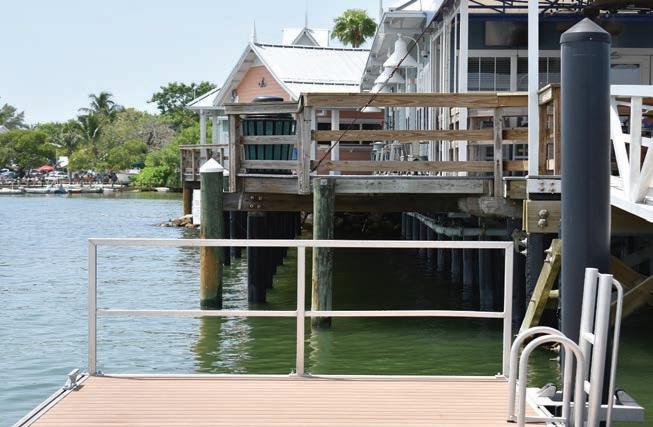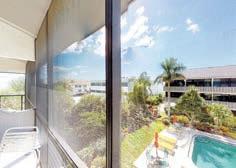
13 minute read
OUTDOORS
THE SUN
Hone your hot weather strategy
SEPTEMBER 9, 2020
Reel Time
RUSTY CHINNIS
Summer may be on the wane but you would never know it unless you’re up early or get out later in the day. Savvy anglers know to change their strategies, tailoring their efforts to maximize comfort and opportunities.
One of the prime times to fish during the “dog days” is before the sun crests the horizon. The myriad dock and bridge lights that illuminate the waterways from Bradenton to Venice are prime targets. Basins with deep holes are also a great place to target rolling tarpon. These areas hold schools of snook as well as trout and a host of other species.
Docks with a water depth in excess of 6 feet are best. Tidal flow is another indication of action. Lights on the up-tide side of a structure are best, allowing you more latitude when making a presentation, preventing hang ups and allowing flies, lures and bait to swing to the fish naturally. With a little attention to detail, it’s possible to target some docks on the incoming tide, and others on the outgoing tide.
The presence of hard bottom near a bridge or dock is another indicator of good fish

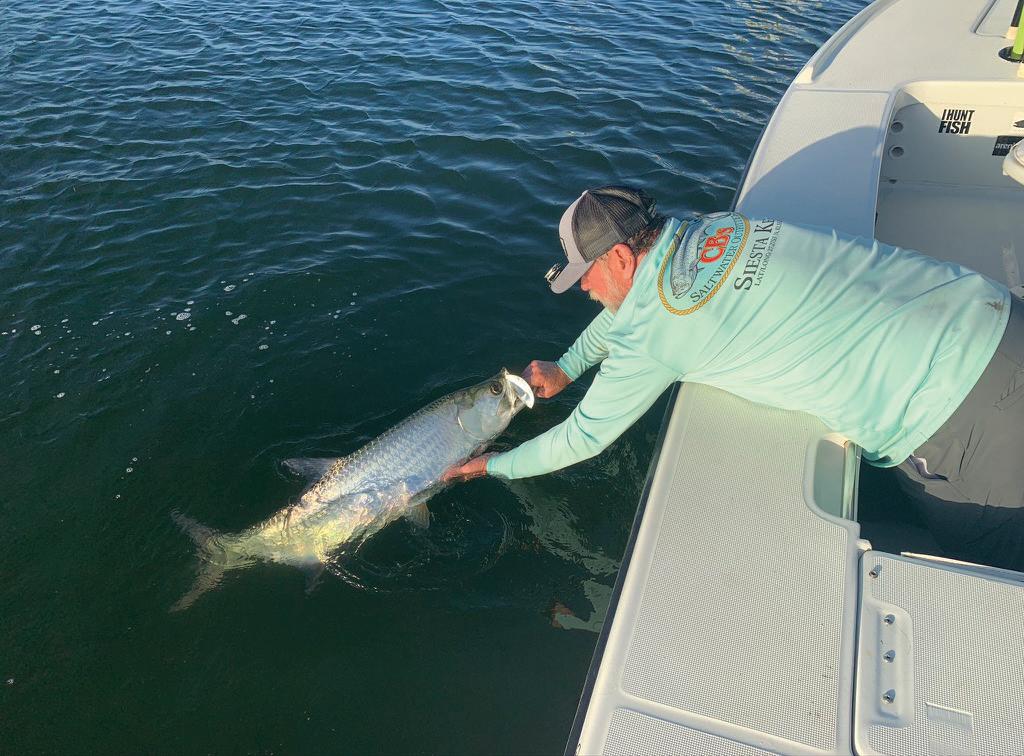
RUSTY CHINNIS | SUN Captain Rick Grassett prepares to release a tarpon that was targeted in a Longboat Key basin in the early morning hours.
habitat. The presence of bait is directly related to structures like ledges, oyster bars and seawalls. These areas attract the bait that lures the fish. The type of light on the dock can also influence the action. Lights that sit low to the water seem to have a more distinctive shadow line, an area where feeding fish concentrate. In any case, the fish seem to hang on the dark edges of the shadow lines.
When the rising sun lightens the horizon, anglers can move to the flats to target redfish, snook and trout. Concentrate your fishing around flats with good grass cover. In addition, look for flats that feature channel edges, potholes, sandbars and oyster bars. The addition of a strong tide will increase your odds.

In the hottest months, most of the early morning tides are from 1 to 1 1/2 feet, so anglers will seldom see pushes or tails. Instead, concentrate on scattering bait, working birds and schools of mullet. One of the most productive strategies is to fish “seams,” demarcation lines that separate grass, sand, and other structure.
While pre-dawn or early morning is generally the best time during sweltering weather, there is one exception. The late afternoon outgoing tides that correspond to the full and new moons provide some fast action with a variety of species. Areas to concentrate on include the slues and channels that drain the inshore flats, and the passes where the funneling effect concentrates game fish and their prey. Passes that have flanking seawalls and rock groins can be particularly productive. These areas attract and concentrate the baitfish on which the predators feed. Work lures and flies close to the structure.
Fishing the “doldrums” can be productive no matter where you fish as long as you follow a few rules. First and foremost, you must find conditions that are acceptable to the species you seek. Snook and redfish are much more tolerant of high water temperatures than trout. In general, water temperatures must not be excessive, and you can count on early mornings and deeper water to moderate conditions. The exception to the rule will be those areas and times where the presence of food overrides the fish’s desire to locate comfortable conditions. Fishing the “Summer Doldrums,” can be challenging, but master the rules and you’ll have a lot of productive fishing to yourself.








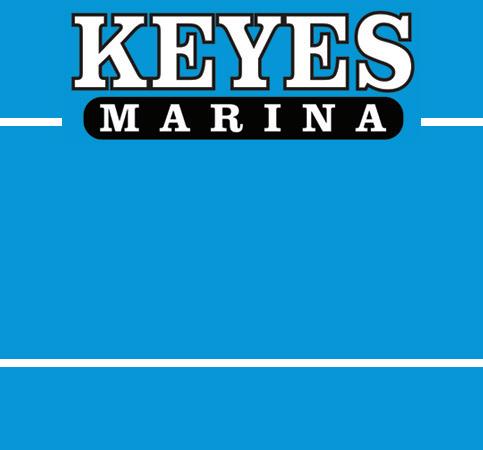

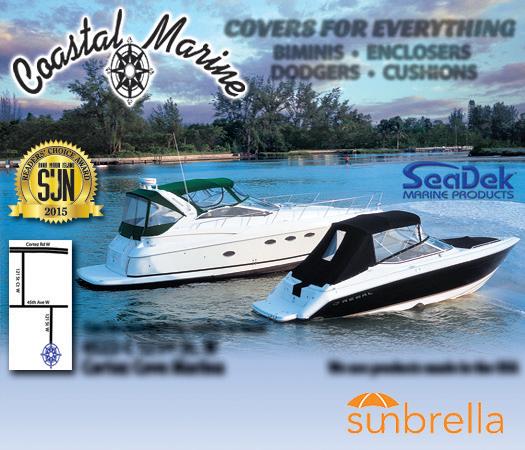











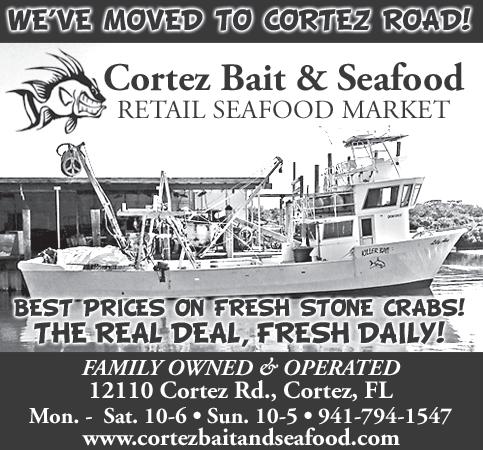
SUBMITTED Frequent client Mike Kaleta and Captain David White show off a perfect size tarpon for light tackle, caught on Aug. 22 on a chunk of threadfin herring.

Inshore fishing good option with summer storms
CAPTAIN DAVID WHITE
Conditions have been sketchy for getting offshore. With frequent popup thunderstorms and bouts of high wind, heading confidently offshore hasn’t been much of an option. We here at Anna Maria Charters have been focused inshore, sometimes switching offshore charters from our 31’ Contender to our 24’ T-Craft.
The staple of dinner-type fishing is Spanish mackerel and mangrove snapper. With the limit of snapper being five per person, it’s not too hard to get your limit.
The influx of rain has pushed the water temperatures down quite a bit. The water temperatures had been 91 and 92; now they’re as low as 84. This is good! The redfish have been loving it. We love these hard-fighting fish. Snook have been eating pilchards with fervor. Fishing any point or pass should do you well.
Also, lots of juvenile tarpon are around. With fish up to 30 pounds or so, they’re always a welcome fight on light tackle. I love these fish and can’t help but yell on the first jump!
CAPTAIN RICK GRASSETT
Anglers fishing Sarasota Bay with me out of CB’s Saltwater Outfitters on Siesta Key had great action with snook, reds and tarpon recently. Rusty Chinnis, from Longboat Key, fished a pre-dawn snook/tarpon trip with me and we caught and released numer
CAPTAIN RICK GRASSETT | SUBMITTED Will Stein had great action catching and releasing numerous snook and reds on flies and jumping several tarpon and landing one on a DOA TerrorEyz while fishing in Sarasota with Capt. Rick Grassett recently.

ous snook on my Grassett Snook Minnow fly before dawn. We shifted gears to tarpon after daylight and caught and released an estimated 20-pound tarpon on a DOA TerrorEyz.
Will Stein, from Longboat Key, and Ben Stein, from Orlando, fished the same trip with me a few days later and the action was even better. They caught and released numerous snook and several reds on the same fly. After daylight we jumped several tarpon and caught and released one on a DOA TerrorEyz. Fly angler Howard Hsu, from Atlanta, fished with me the next day and also had good action, catching and releasing snook and a red on my Snook Minnow fly.
Fishing dock lights before dawn is usually dependable for snook and more and is a great way to beat the heat. Juvenile tarpon and reds may also frequent dock lights this time of year. Fishing deep grass flats of Sarasota Bay is a good choice for action with a variety of species including trout, blues and Spanish mackerel.
Our natural resources are under constant pressure from red tides fueled by industrial, agricultural and residential runoff, freezes, increasing fishing pressure and habitat loss and degradation; please limit your kill, don’t kill your limit!
A hundred years of hurricanes
Cindy Lane

We’re at the peak of hurricane season this week, a good time to watch the classic Florida hurricane film, “Key Largo,” with Humphrey Bogart, Edward G. Robinson and Lauren Bacall, and to visit the Florida Maritime Museum in Cortez. "Caught in the Storm: 100 Years of Florida Hurricanes" is an outdoor exhibit that keeps you distanced while walking you through the major hurricanes that made direct contact with Florida between 1919 and 2019.
Storm surge heights from notorious storms are superimposed on photos of museum buildings and displayed in front of the buildings where the photos were taken, a startling display of just how powerful the storms were.
A related online exhibit lets you submit your personal experiences with hurricanes for archiving at the museum, and features an explanation of how storms form and develop.
When the museum reopens next year on Jan. 5, an indoor exhibit will showcase the timeline of Florida hurricanes throughout the last century.
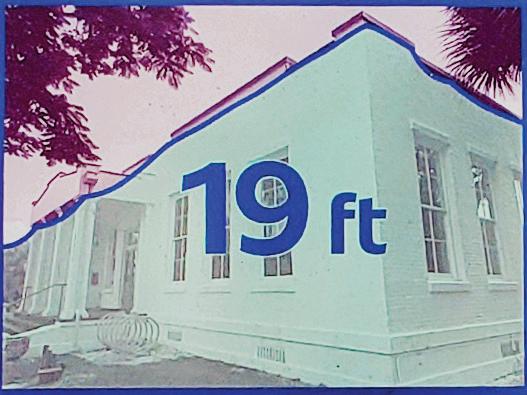
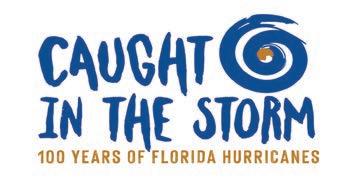
CINDY LANE | SUN A blue line superimposed on a photo of the Florida Maritime Museum at Cortez shows where two hurricanes in 1935 and 1950 caused storm surges of 19 feet each in other parts of Florida.
The exhibit includes several storms with the amount of storm surge they produced: • 1921 Unnamed hurricane - 11 feet • 1926 Unnamed hurricane - 14 feet • 1928 Unnamed hurricane - 10 feet • 1935 Unnamed hurricane - 19 feet • 1944 Unnamed hurricane - 13 feet • 1950 Hurricane King - 19 feet • 1960 Hurricane Donna - 13 feet • 1965 Hurricane Betsy - 8 feet • 1972 Hurricane Agnes - 7 feet • 1985 Hurricane Kate - 11 feet • 1992 Hurricane Andrew - 17 feet • 2004 Hurricane Charley - 4 feet • 2017 Hurricane Irma - 8 feet
Time to get stocked up on your hurricane supplies and make your evacuation plan. Stay safe!
Your“Wholesome & Wholehearted”Store.
New USDA-Certified Organic CBD Tinctures


Find Yours at Your CBD Store Bradenton or atSunFlora.org
Bradenton
SAVE 15% ON YOUR PURCHASE


May not be combined with any other offers or discounts. Only at Your CBD Store Bradenton.

2723 Manatee Avenue West Bradenton, FL 34205 (941) 226-1230
TRAM: Program starting soon
FROM PAGE 3 additional CRA discussions about potentially using a route that relies more on Gulf Drive and Bridge Street.
During Wednesday’s meeting, resident Terry Gephardt again expressed her concerns about the potential tram route.
“I want to make the same comment I’ve made all along: Please do not run the tram down Fifth Street South. We are a neighborhood. We want to be a community, we don’t want to be a commercial endeavor,” she said.
The exact tram routes and operating hours will be subject to ongoing review and revision.
“This is a pilot project. We need to decide where it runs, where it will be best suited, how often it will be used and what the peak seasonal needs and demands are,” Perry said.
Chappie also addressed the routing concerns.
“The routing is going to be flexible. I’ve heard what the concerns are on Fifth Street and there’s a lot of good points there. I think we need to look at these other areas, along with the Fifth Street area. I think we need to move forward with it and see how this shakes out,” Chappie said.
Perry said LaRose is willing to treat the pilot program as a fluid situation as long as the CRA commits to two trams.
The contract calls for LaRose to provide the CRA with ridership and route data that can be used to continually evaluate the program’s impact and success.
That data may also be used to support the CRA’s potential future efforts to install a dedicated tram path in the Cortez Beach parking area, running parallel to Gulf Drive. City Engineer Lynn Burnett has already discussed with county staff the possibility of a tram path and reconfiguring the Cortez Beach parking lots using diagonal parking and ropes and bollards to separate the parking areas from the tram path.
ANTICIPATED COSTS
Perry said the trams will run seven days a week, 365 days a year and the initial hours of operation will be Sunday through Thursday from 11 a.m. to 10 p.m., and Friday and Saturday from 11 a.m. to 11 p.m.
The city's contract with the Easy Parking Group is based on daily rates. Perry said the rates will be $155 per day for the regular shuttle cart and $165 per day for the ADA-compliant cart. This equates to $320 per day, approximately $9,731 per month and $116,800 per year.
As he has done during previous discussions, CRA Chair Ralph Cole again expressed concerns about dedicating more than $100,000 per year in annual CRA revenues to a parking tram program. In recent years, CRA’s annual tax revenues have averaged between $500,000 and $600,000, according to City Treasurer Shayne Thompson.
During Wednesday’s meeting, Cole questioned whether the proposed an

EASY PARKING GROUP | SUBMITTED Tram-based advertising opportunities are expected to help offset the CRA’s tram expenditures.

nual tram expenditure might be better used to pursue other CRA projects instead, including the additional undergrounding of utility lines. Despite his reservations, Cole agreed to give the pilot program a try.
Perry said advertising revenue generated by signs affixed to the trams would help offset some of the CRA expenses. Perry said the ad revenues will be noted on the monthly invoices and deducted from the CRA’s monthly payments to the Easy Parking Group. Perry said she’s already been contacted by six business owners interested in advertising.
“If the pilot program’s not successful, we can cancel it. If we decide we can’t appropriate the funds for it, we can get out of it,” Perry said.
ADDITIONAL COMMENTS
Due to the ongoing coronavirus pandemic and the road construction taking place in and around the CRA district, member David Bell questioned whether Nov. 1 was the best time to launch the program and begin collecting ridership data.
CRA member and Beach House restaurant owner Ed Chiles said, “It seems like we’re on the precipice here of success, and that gives me goosebumps. We’ve been working on this for years and years.”
Chiles noted parking has historically been the biggest problem in the Bradenton Beach business district.
“I think it’s a great overall Bradenton Beach project. We’re going to have something fresh and new as we hopefully come out of this pandemic. I think it’s universally supported by the businesses. Ricinda, thank you for your perseverance. It looks like we’re about to make this thing happen,” Chiles said.


